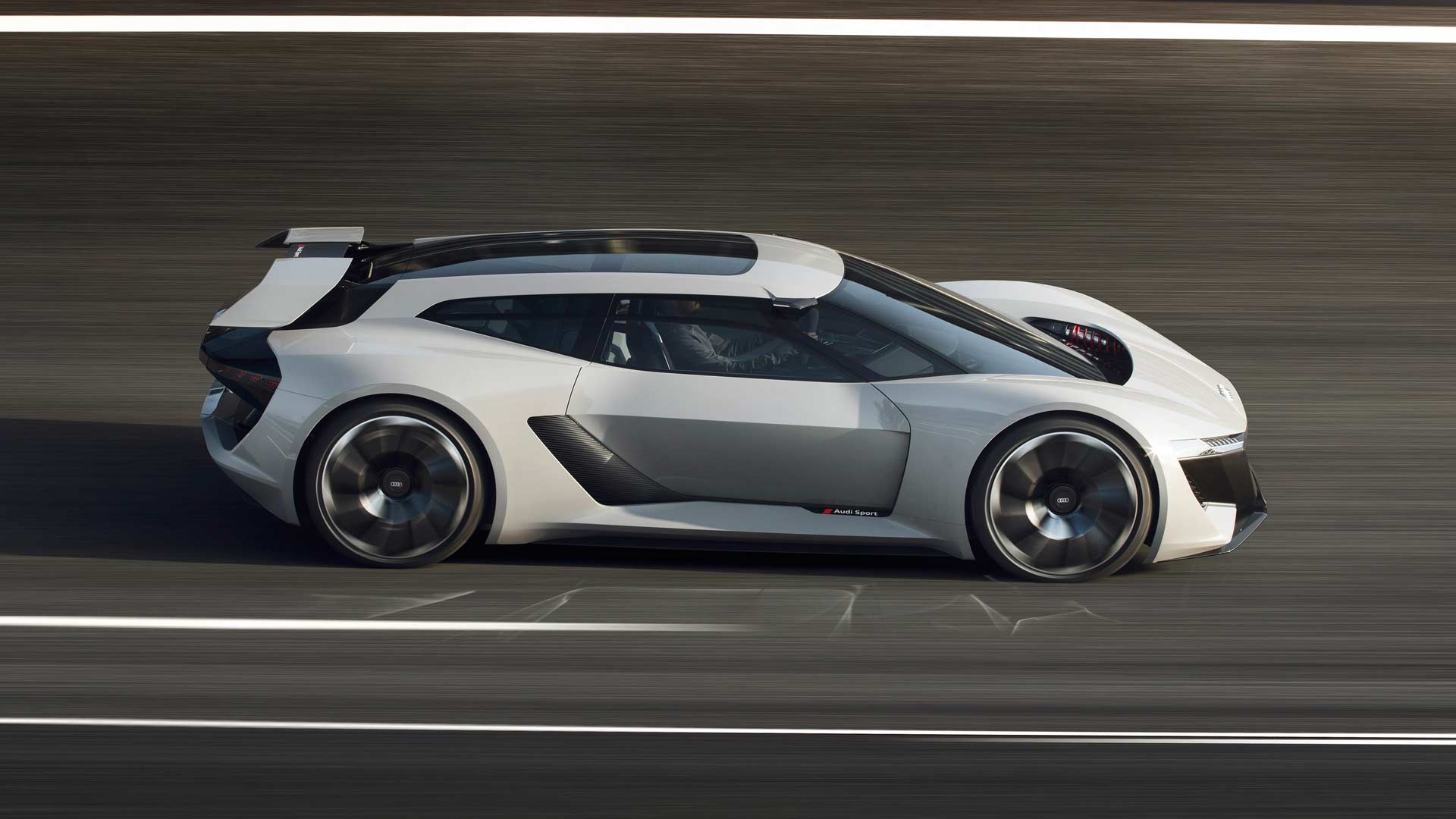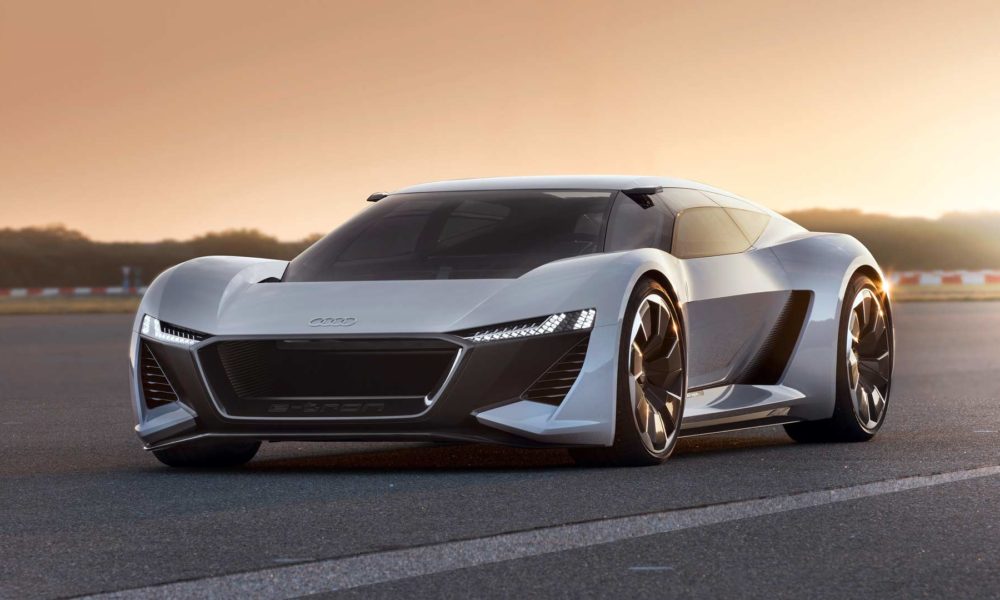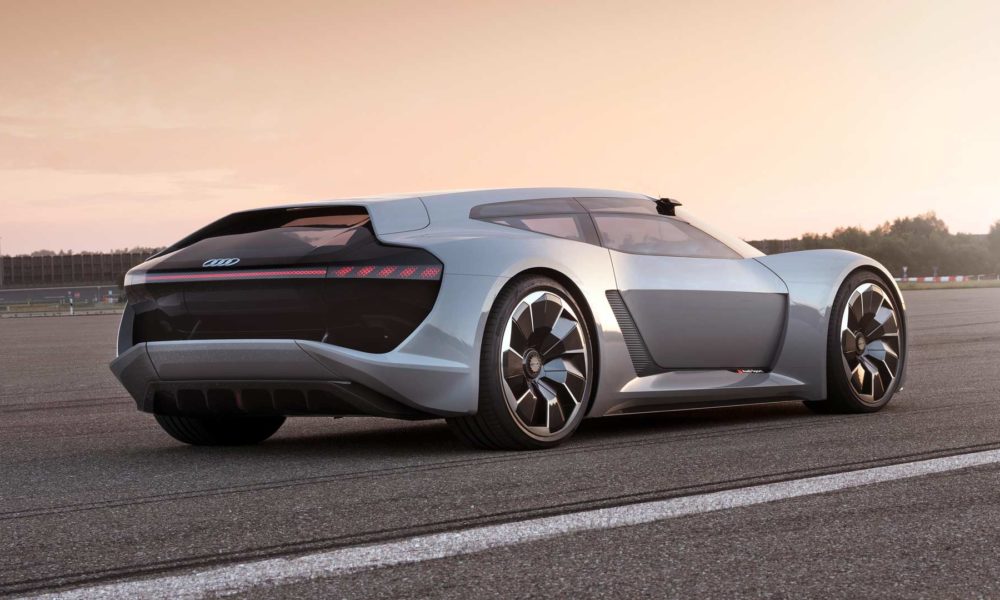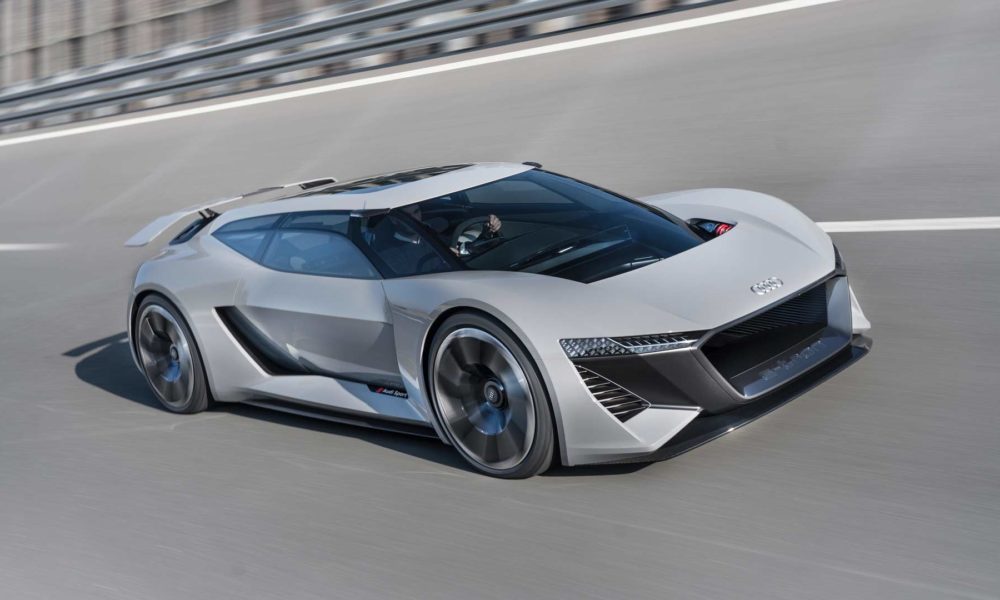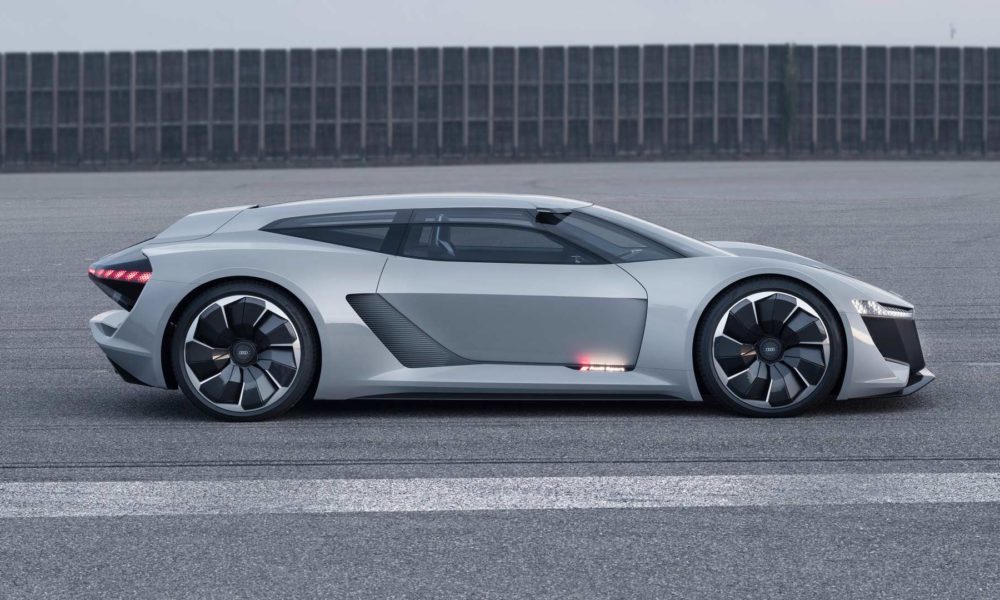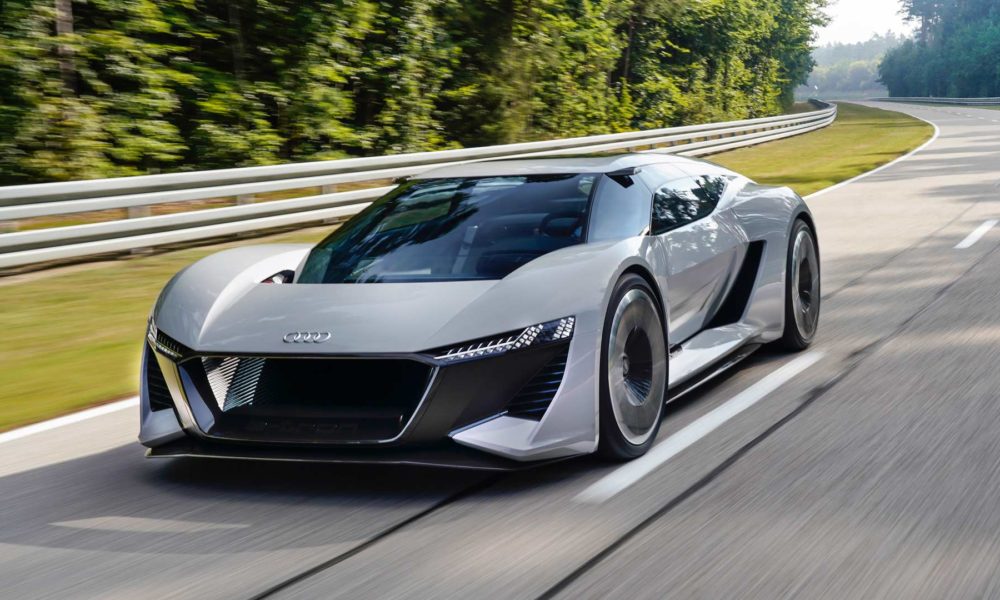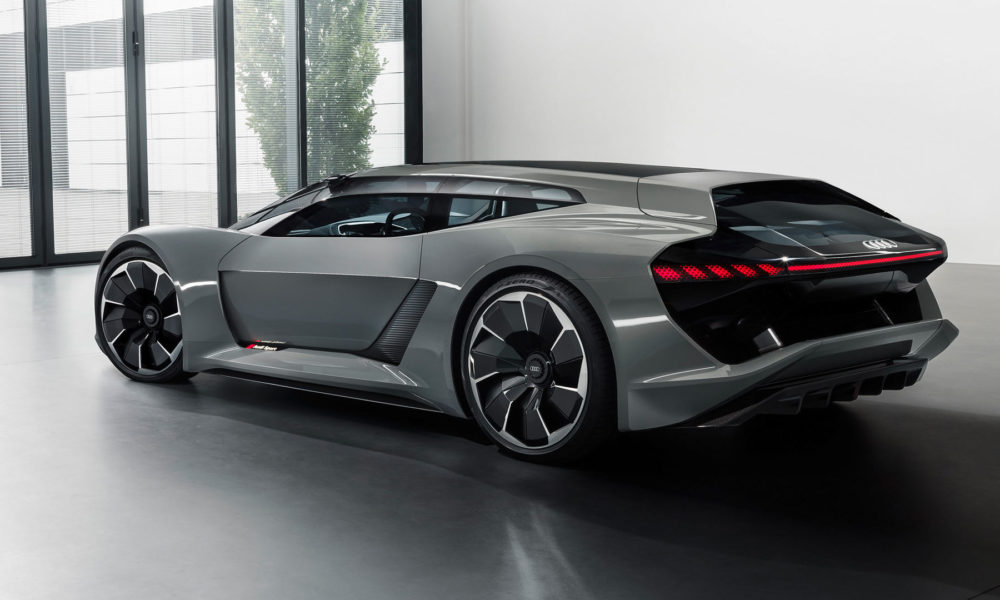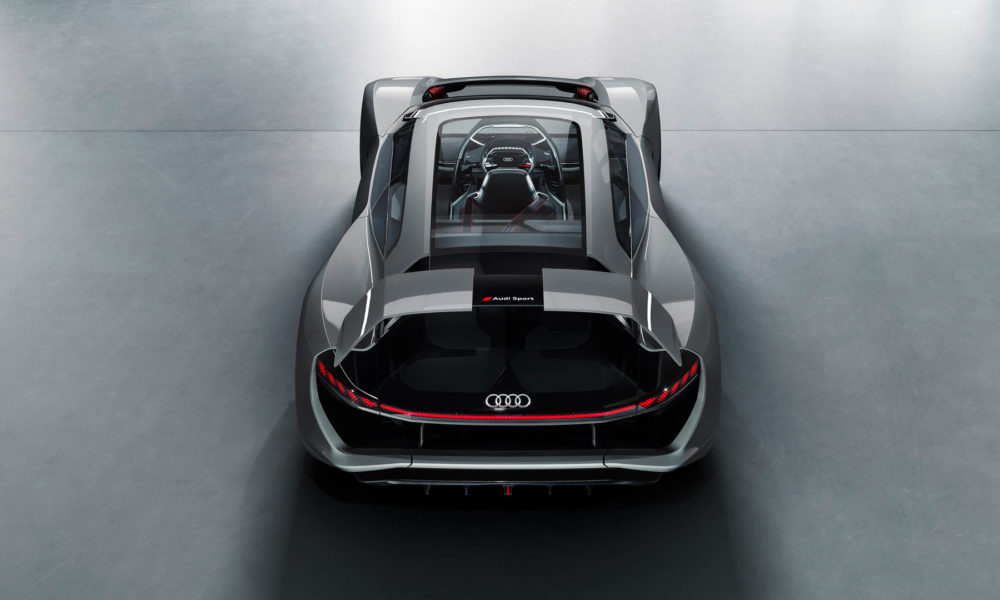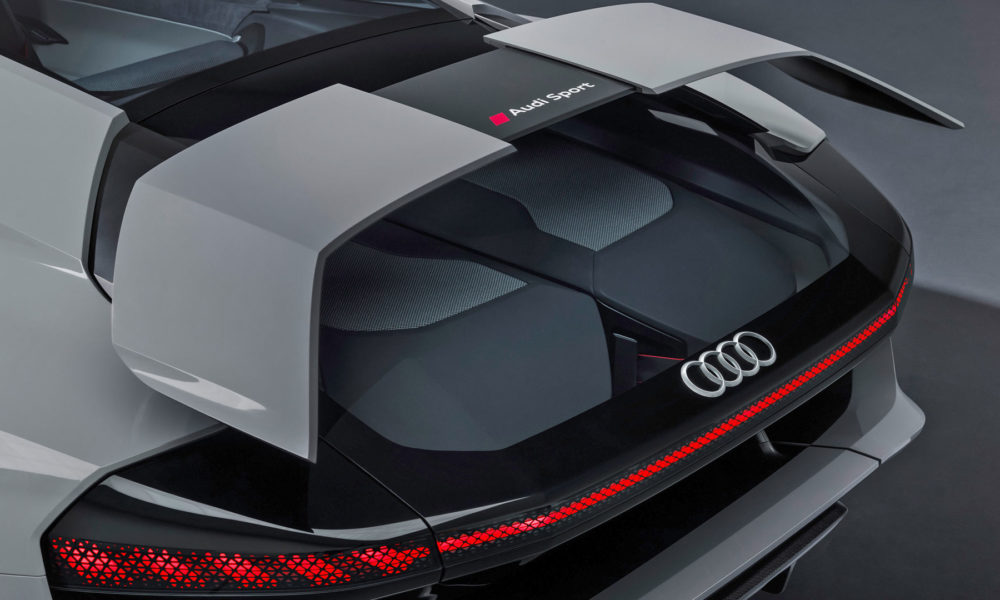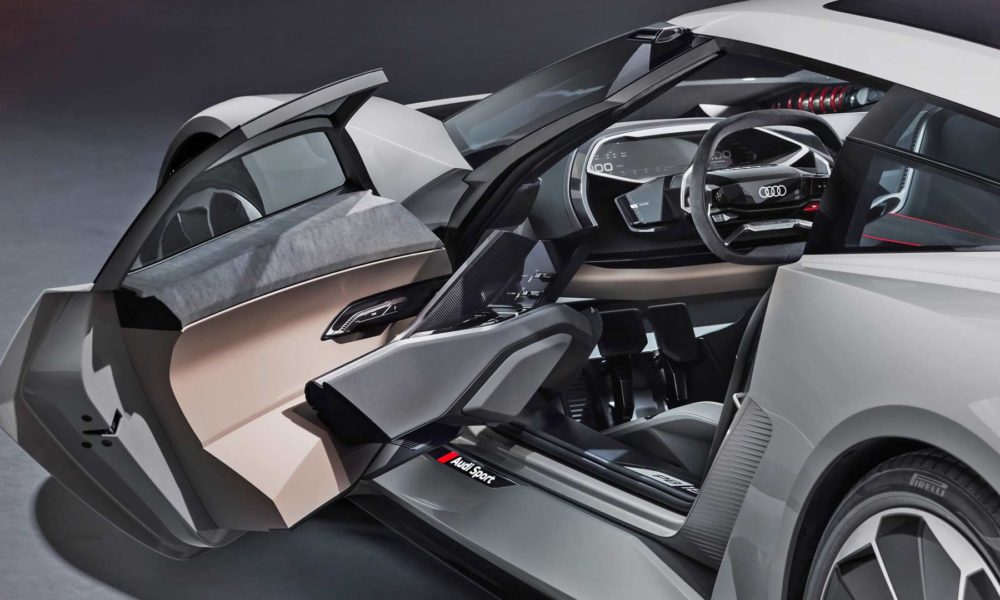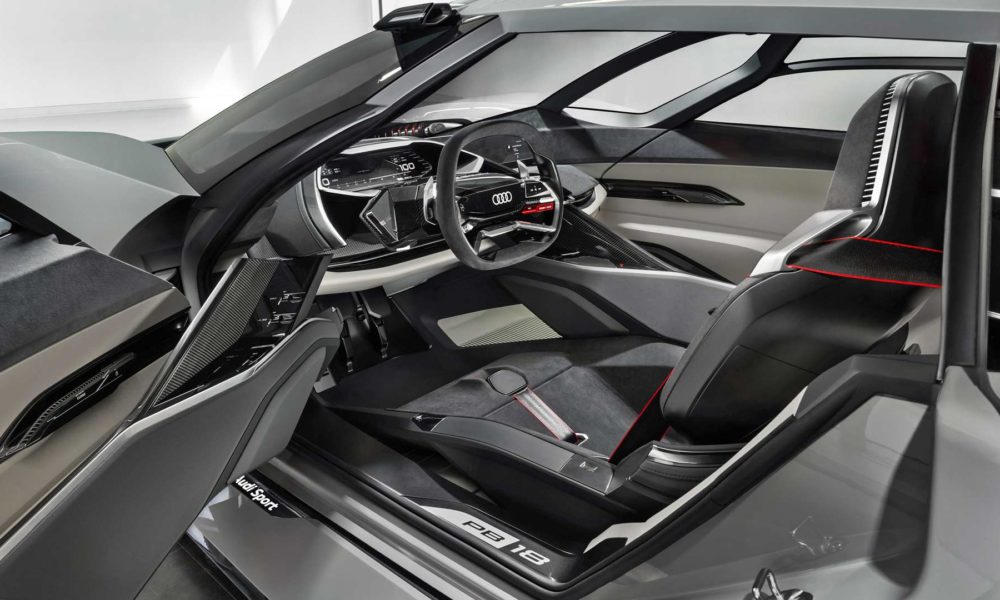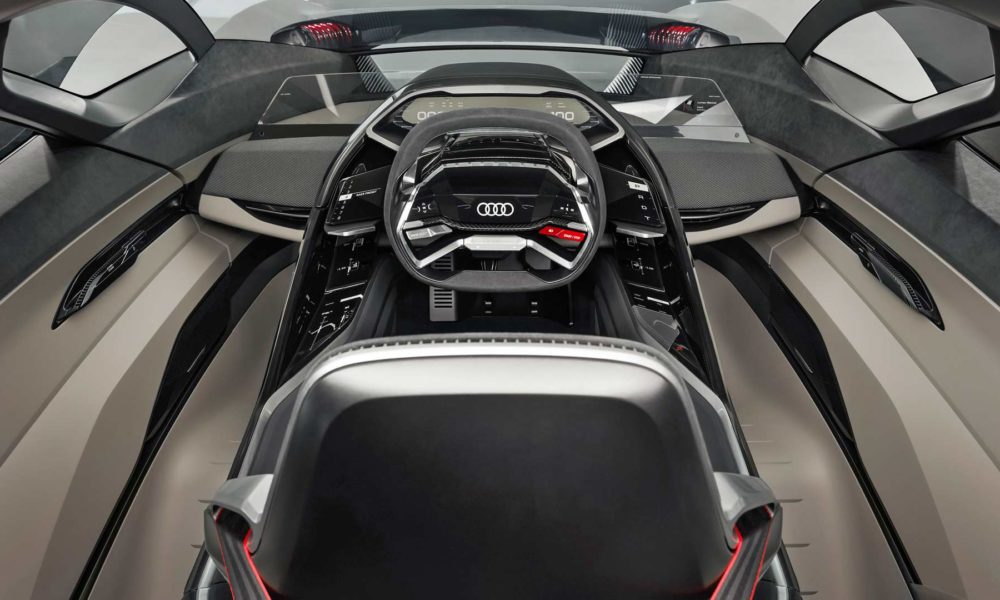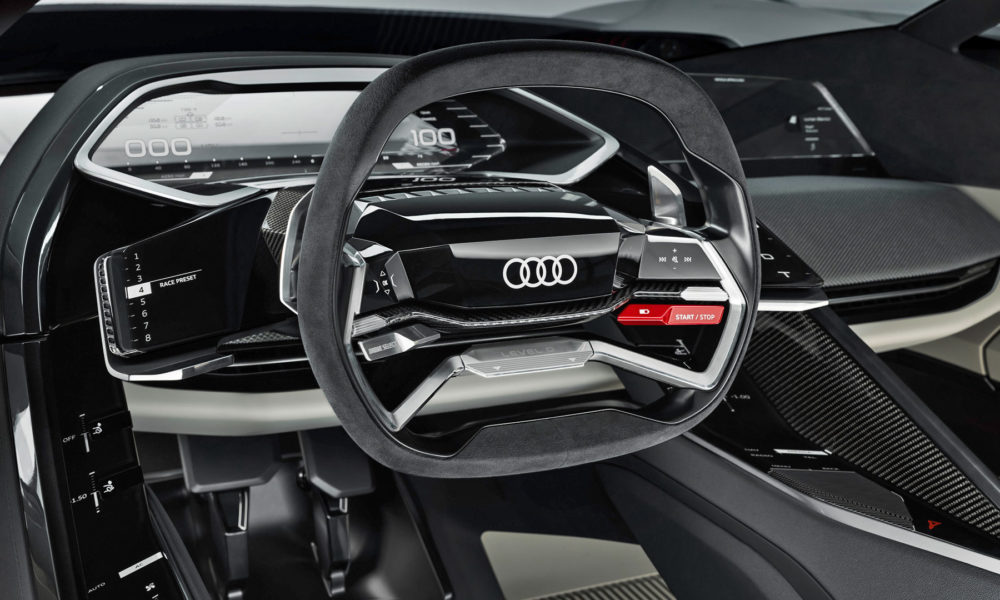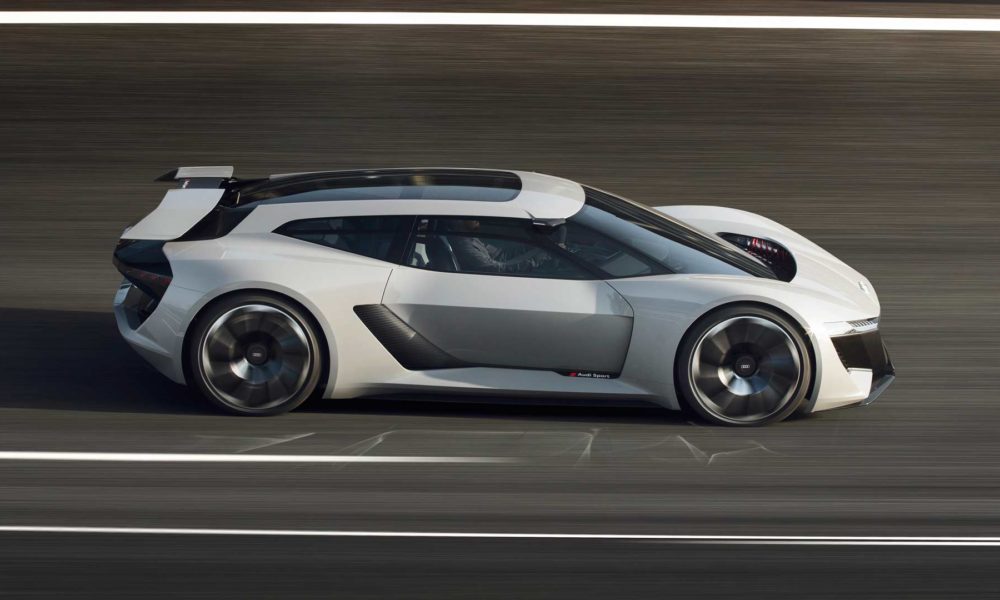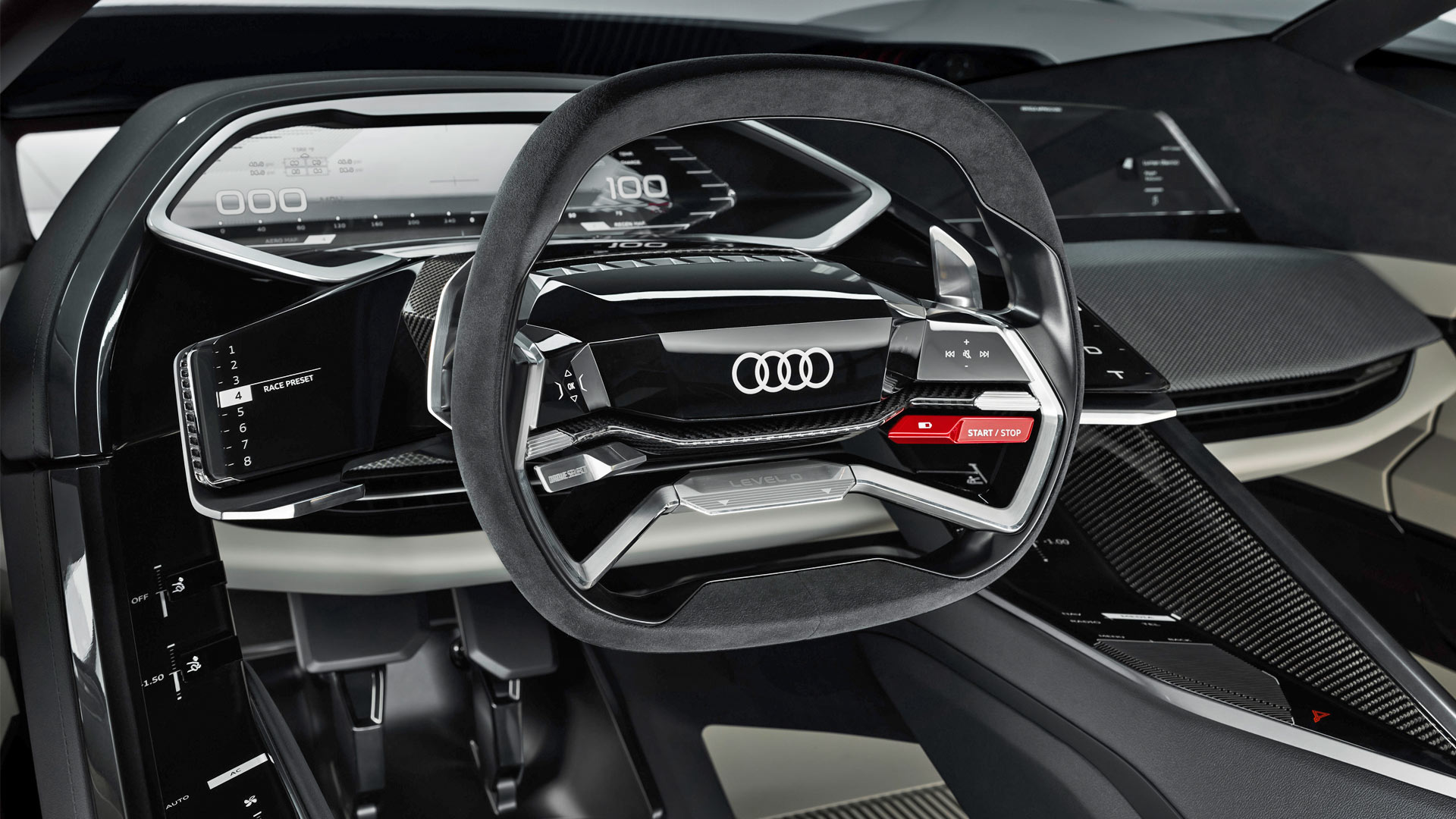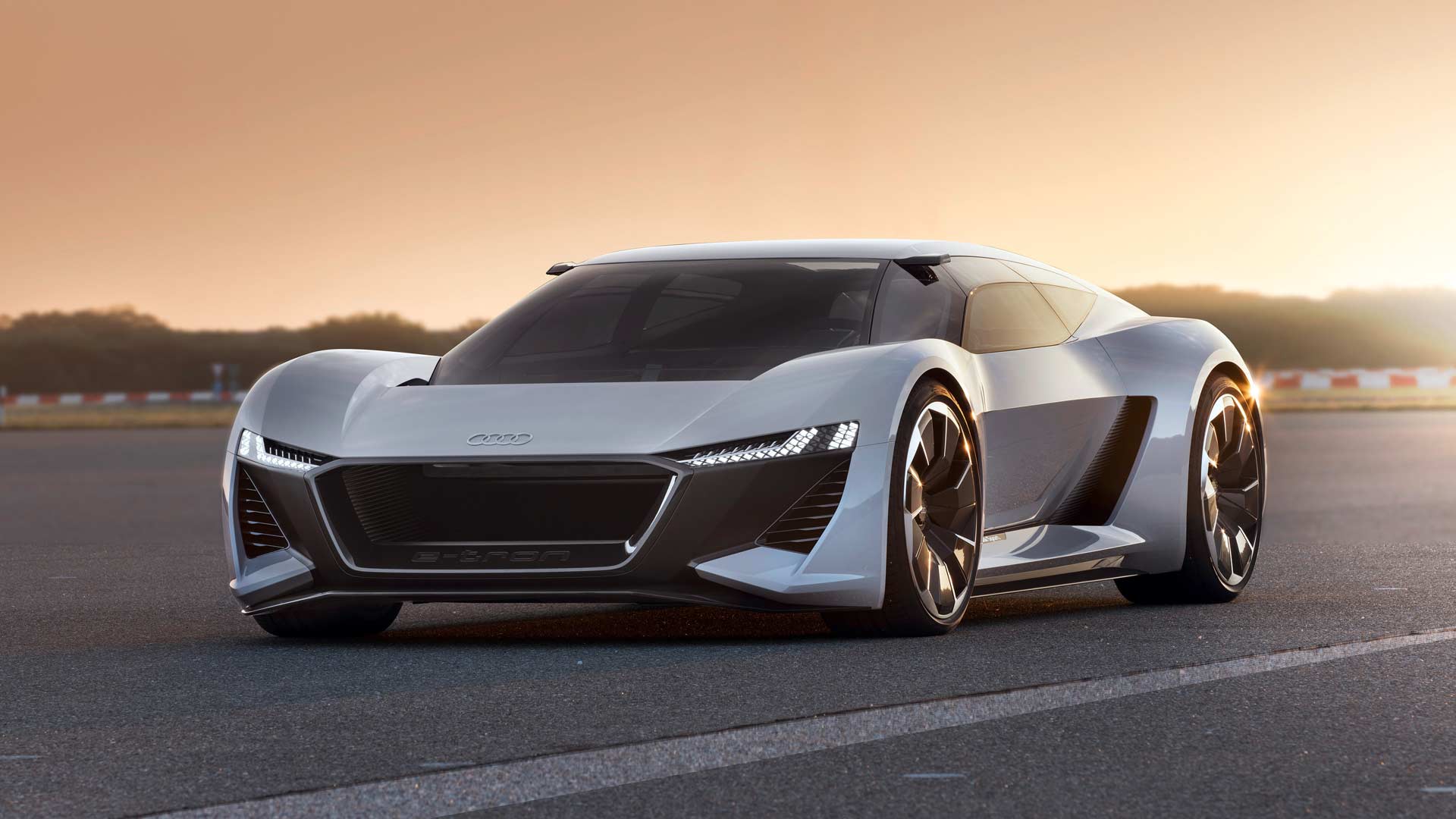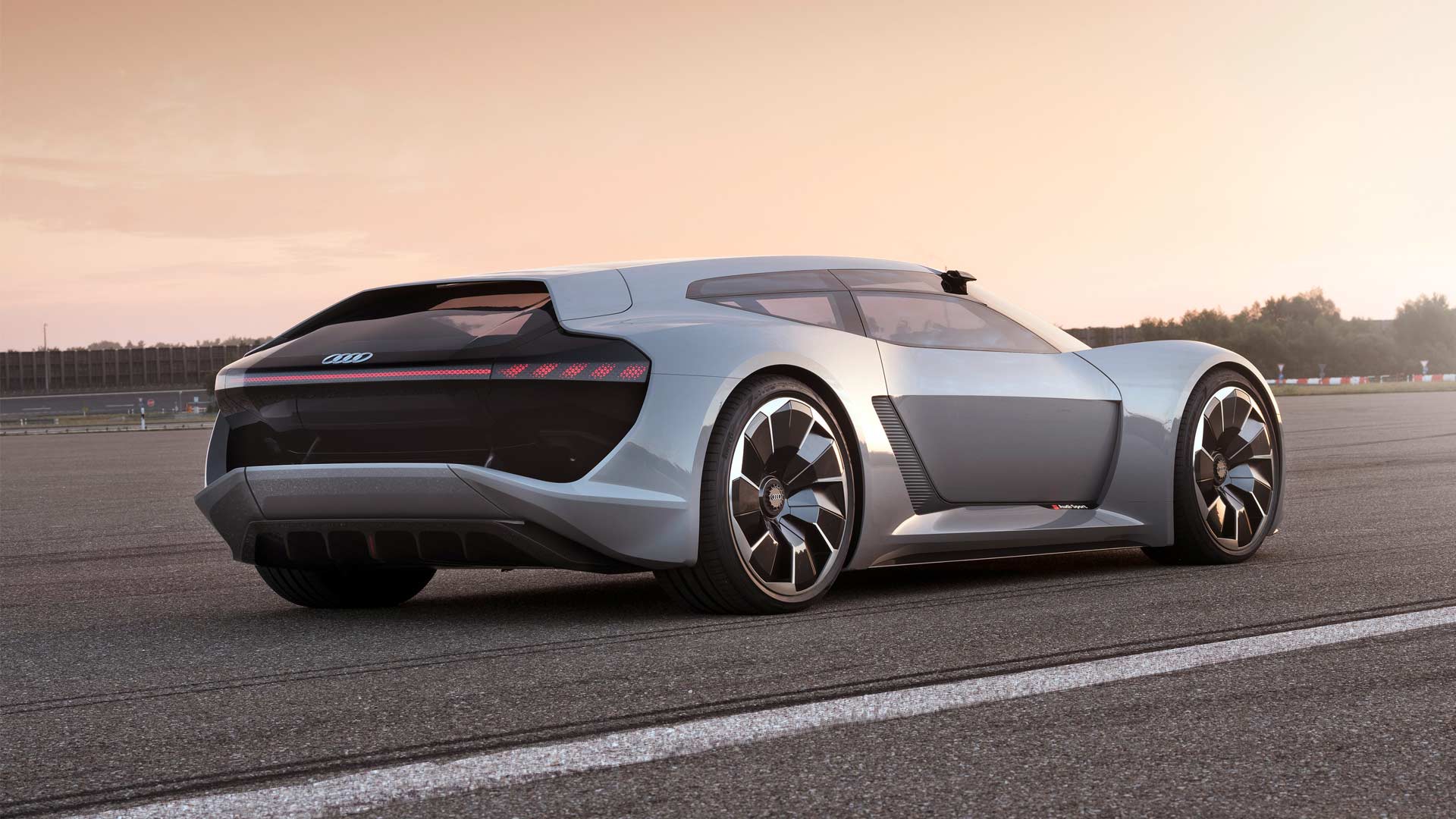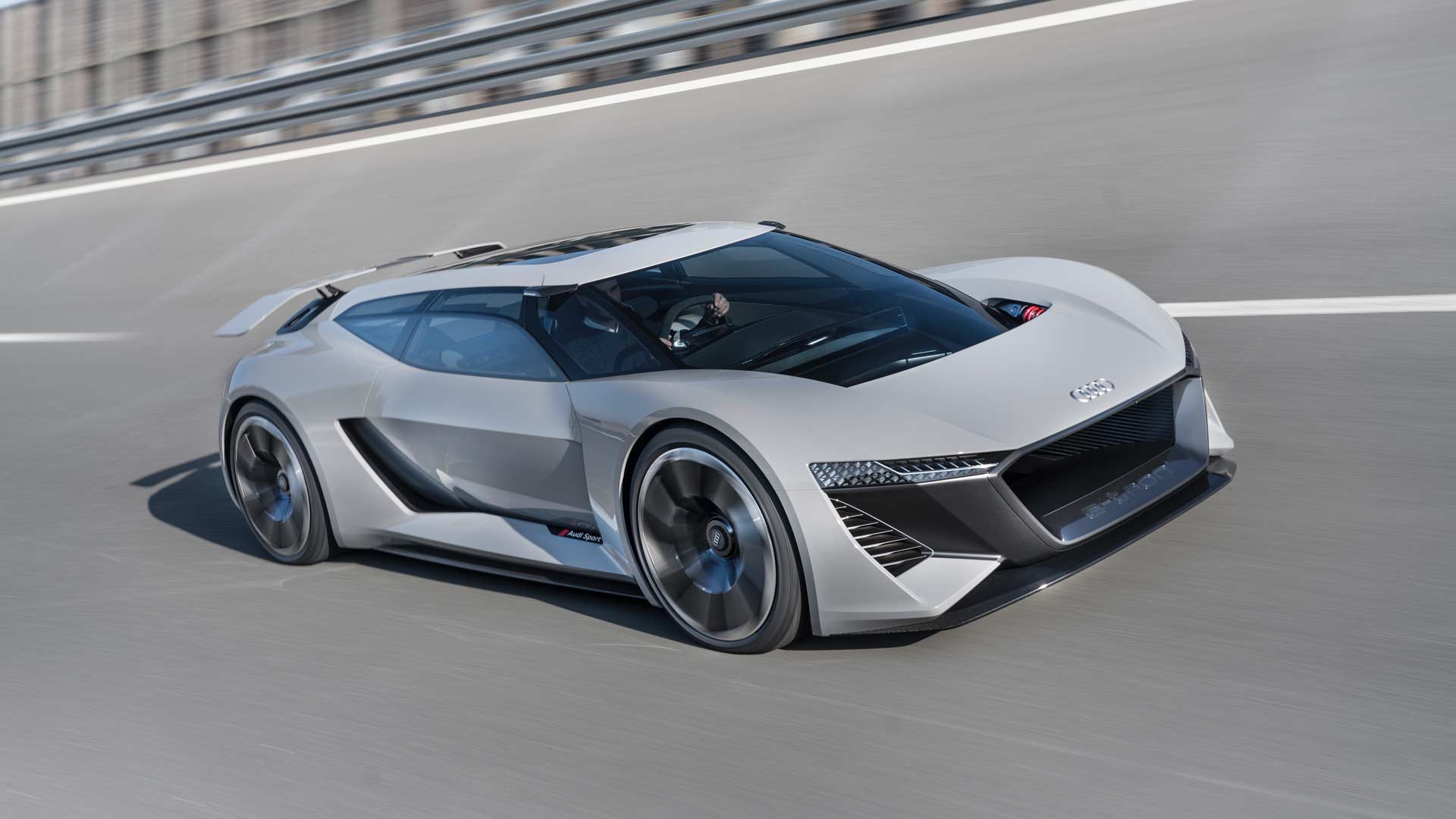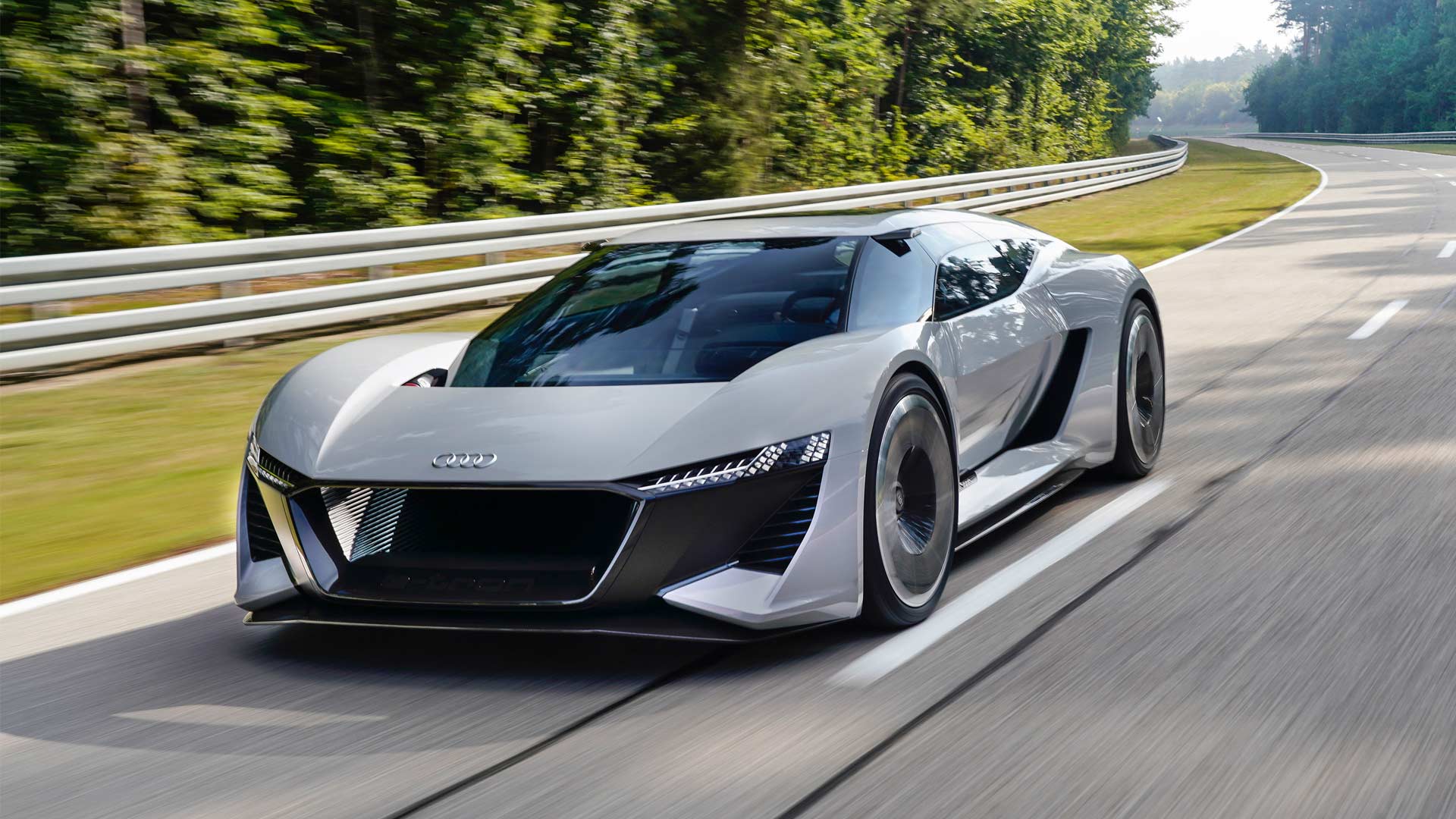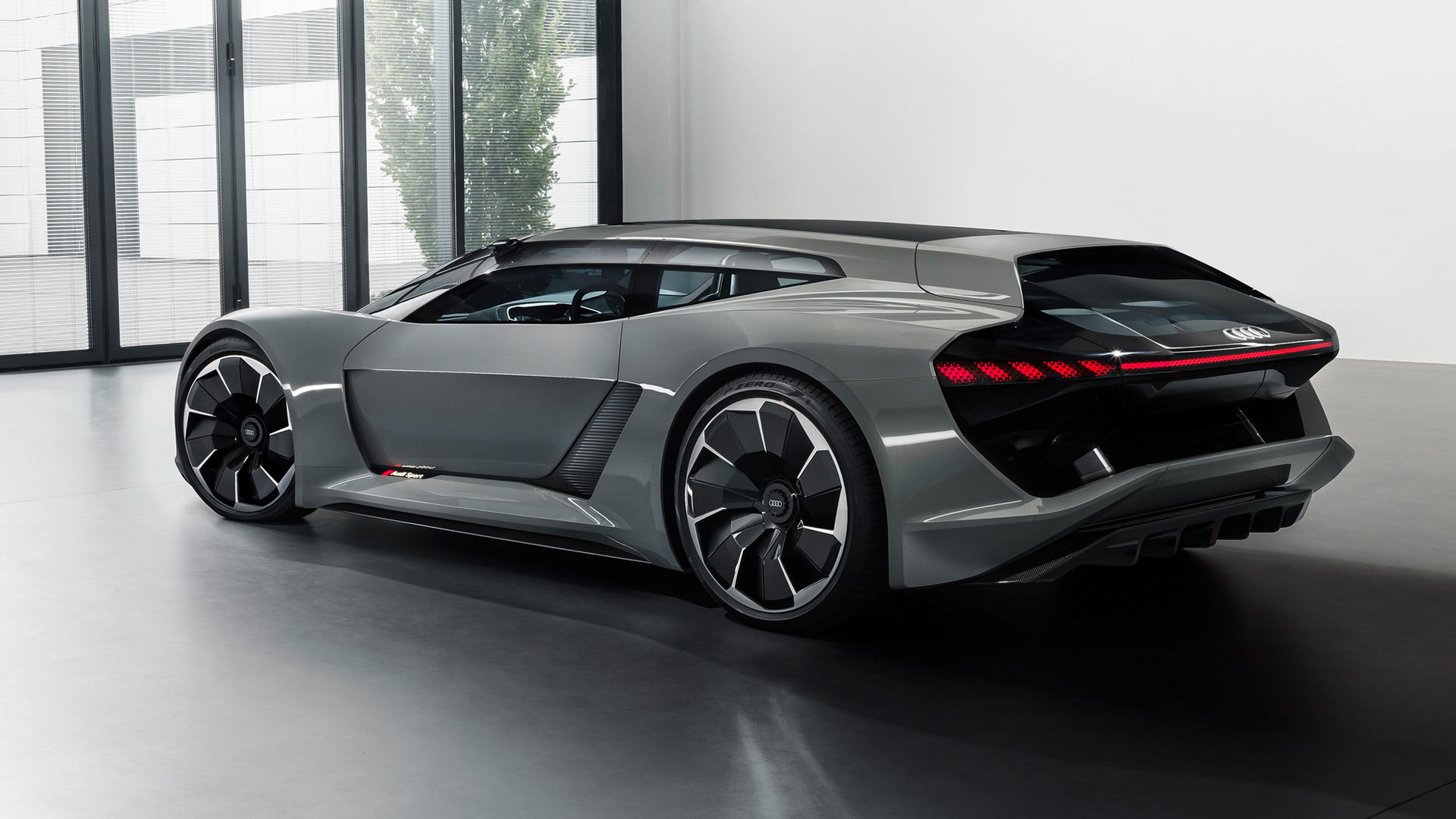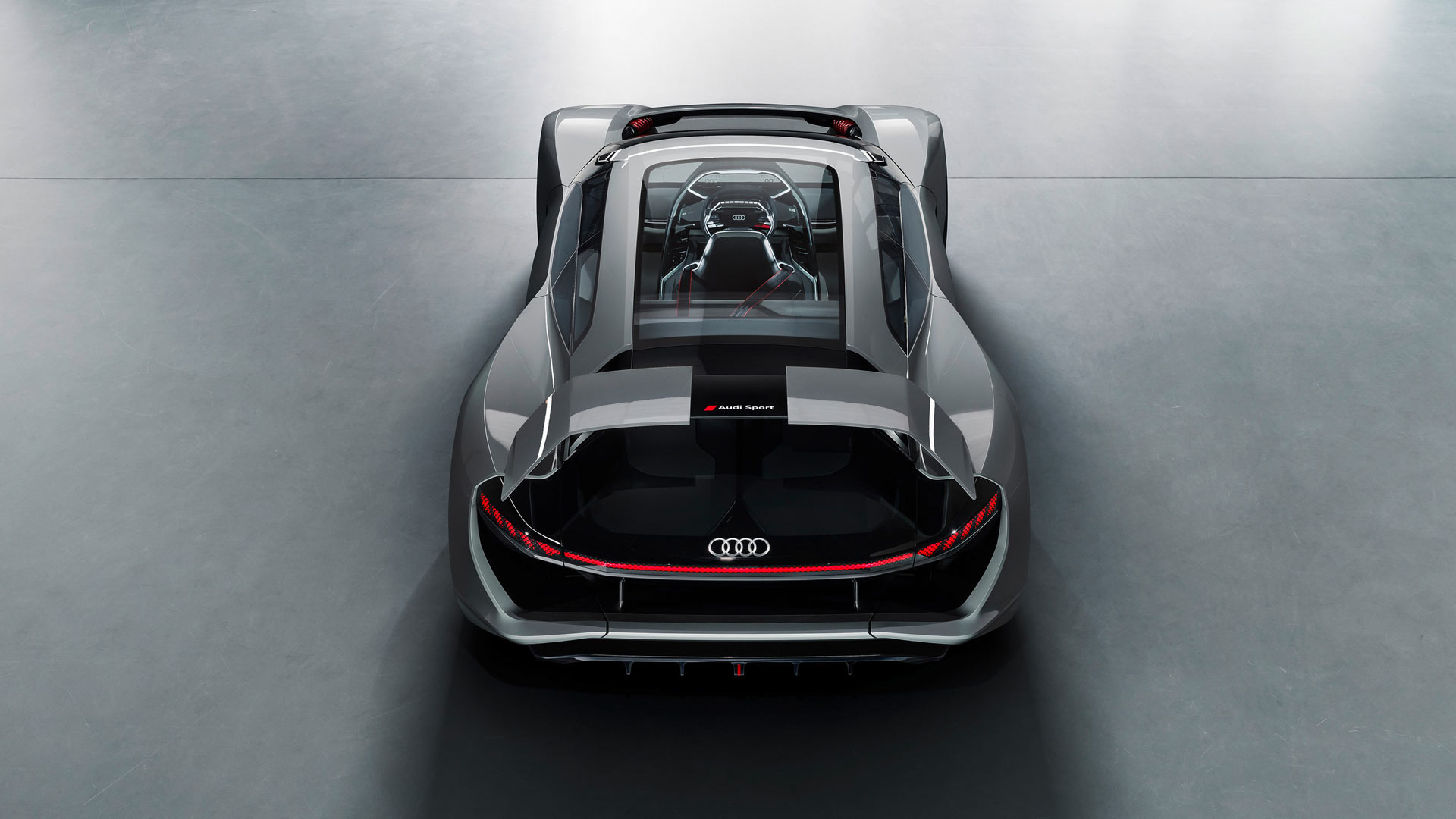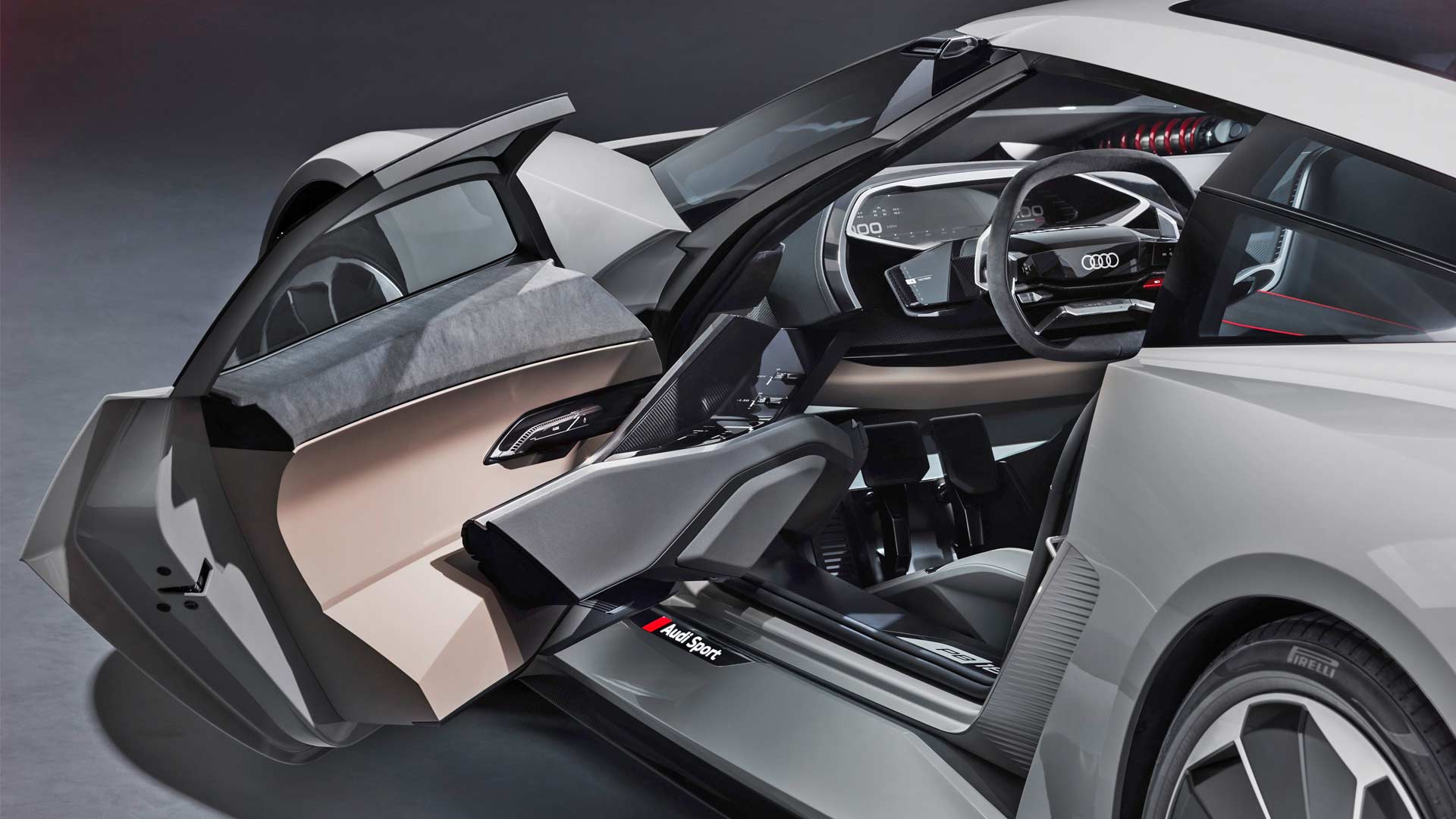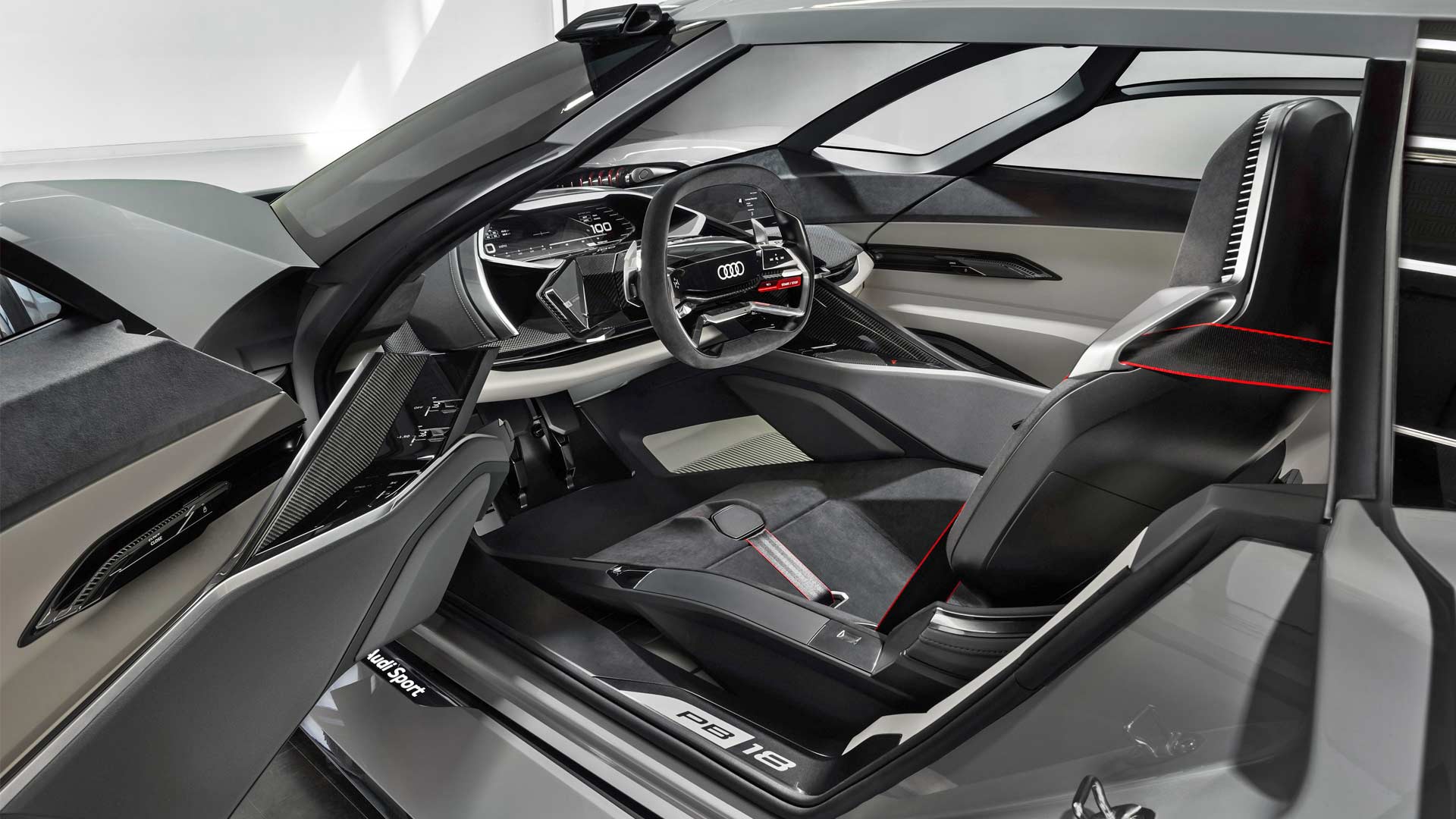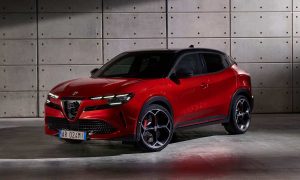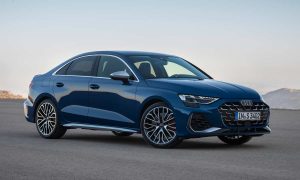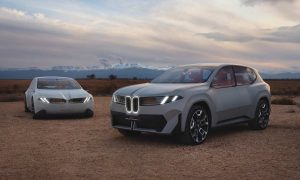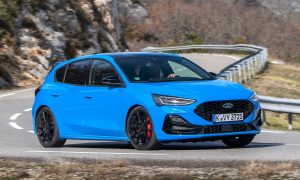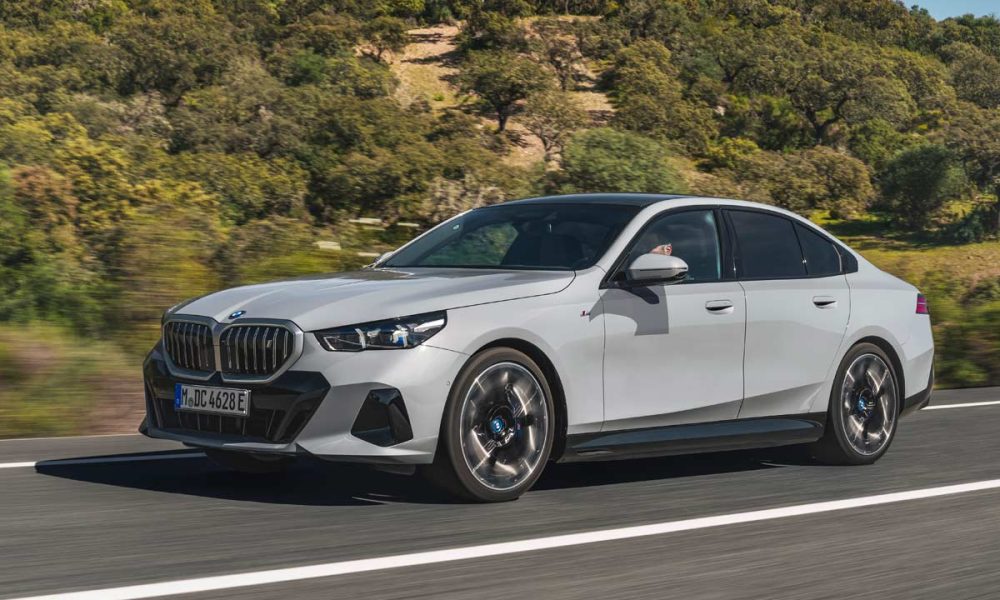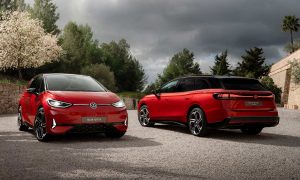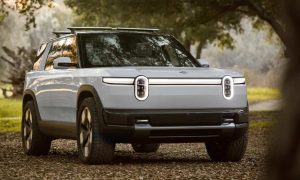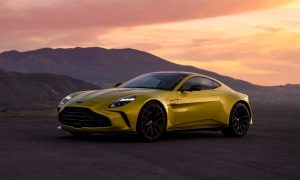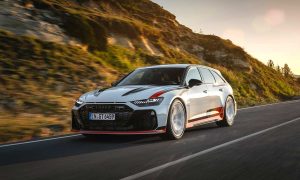Audi has unveiled the PB18 e-tron concept at the Pebble Beach Automotive Week in Monterey, California. The ‘PB’ stands for Pebble Beach venue while the rest of name is taken from the R18 e-tron LMP1 racing car.
As for the design, it has a shooting brake body style and some of the design elements are taken from the Aicon concept. But then, the purpose makes them polar opposites. While the Aicon was designed as a fully automated, long-distance luxury vehicle, the PB18 e-tron is intended to be a radical driving machine for the racetrack and road.
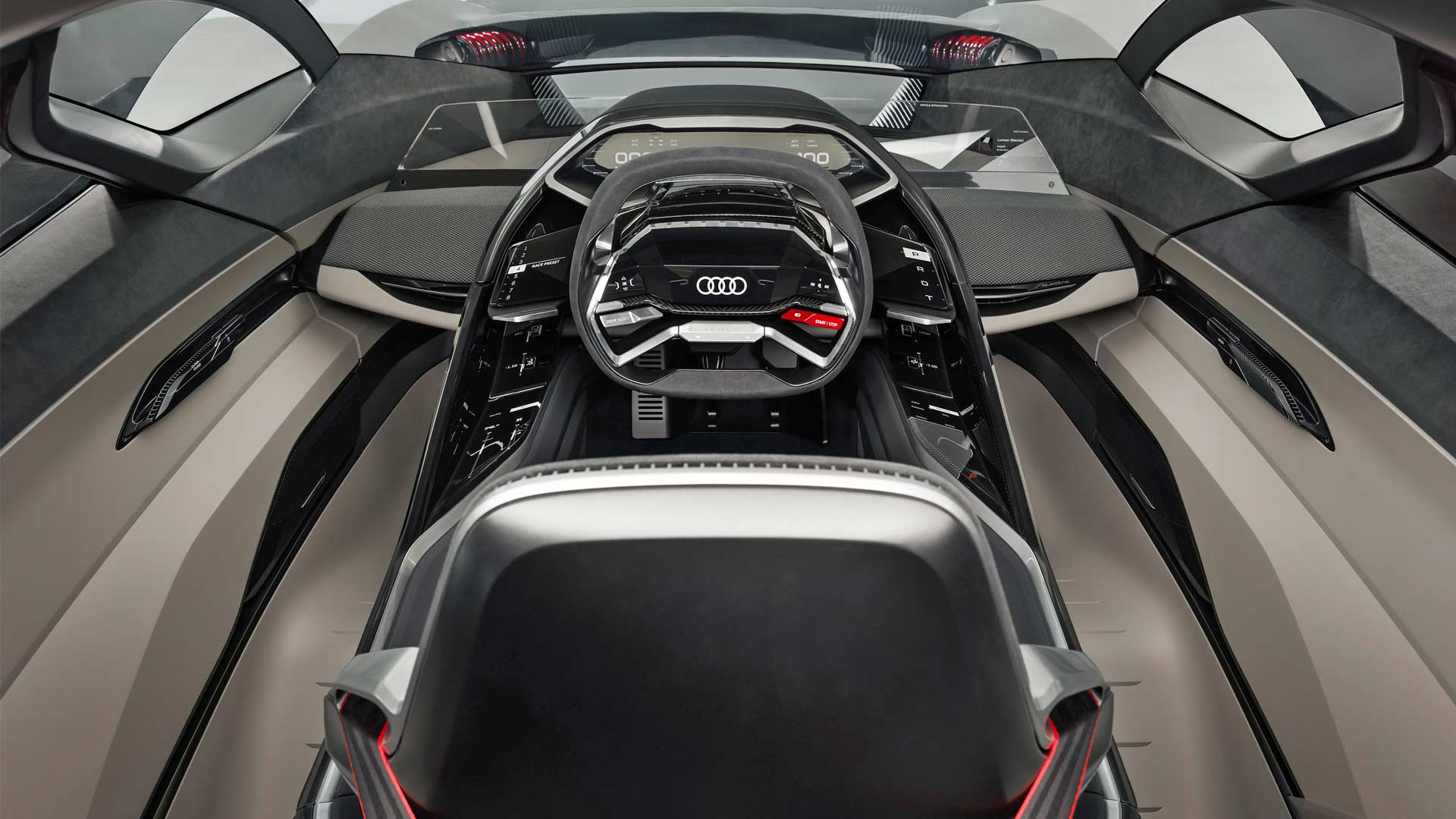
Which is why the interior layout is like this. When driving solo, the monocoque can be positioned in the center as shown in the picture above. The central driving layout might remind you of the Egoista.
The driver’s monocoque can also be slid into the side position, from where the PB18 e-tron can be steered like a conventional road vehicle and apparently, there is room for a passenger. An additional seat can be accessed on the other side.
The internal working title for the concept was “Level Zero” – as an explicit way to differentiate it from the Levels 3, 4 and 5 of autonomous driving currently in focus at Audi. It is also engraved on the steering wheel here. There are no complex systems for piloted driving on board and no comfort features to add weight. The PB18 e-tron is all about the human driver.
Mounted within the field of vision is a transparent OLED surface which shows data from navigation and vehicle electronics. In simple words, a fancy head-up display.
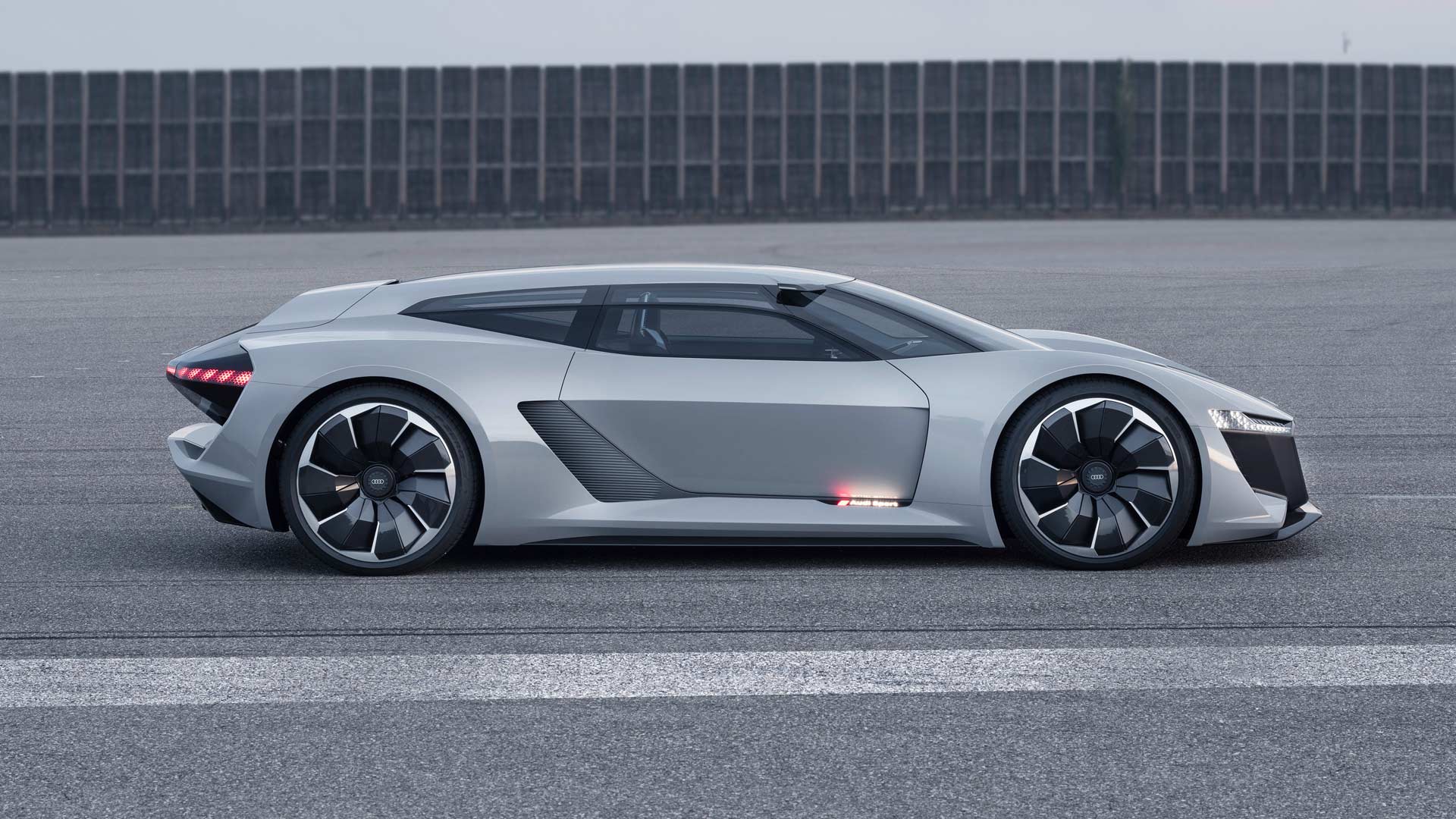
The car rides on large 22-inch wheels, each with 8 asymmetrically designed spokes, reminiscent of turbine inlets. Their rotation ensures excellent air supply to the large 19-inch carbon brake discs.
The PB18 e-tron is 4.53 meters long, 2 meters wide and just 1.15 meters tall. The wheelbase is 2.70 meters. The shooting brake design also results in 470 litres of cargo space. An exclusive luggage set can be customized to fit the cargo space to make an optimum use of the luggage compartment.

The rear diffuser can be moved downward mechanically to increase downforce. The rear spoiler, which normally is fixed, can be extended rearward for the same purpose.
Push-rod
As for the suspension, there’s a push-rod system on the front axle and pull-rod system on the rear – both with adaptive magnetic ride shock absorbers. Audi said that the suspension of the R18 e-tron quattro Le Mans racing car served as a model for the basic architecture.
Power
Which brings us to the business end then. The car has 3 powerful electric motors – one up front and two at the rear – a quattro drive. The latter are centrally located between the steering knuckles, each directly driving one wheel via half-shafts.
They deliver a power output of up to 150 kW to the front axle and 350 kW to the rear. Maximum output is 500 kW and with boosting, the driver can temporarily get up to 570 kW (764 hp). The combined torque of up to 830 Nm (612.2 lb-ft) allows acceleration from 0 to 100 km/h (62.1 mph) in around 2 seconds – a speed that differs only marginally from that of a current LMP1 prototype.
The Torque Control Manager, which works together with the Electronic Stabilization Control (ESC), actively distributes the power to the wheels of the front and rear axles as needed.
The motors draw power from a liquid-cooled solid-state battery that has an energy capacity of 95 kWh. A full charge provides a range of over 500 km (310.7 miles) in the WLTP cycle. The PB18 e-tron is already designed for charging with a voltage of 800 volts, meaning the battery can be fully recharged in about 15 minutes. The car can also be charged via induction with Audi Wireless Charging (AWC).
If you’re interested in knowing about the weight, the PB18 e-tron weighs less than 1,550 kg, thanks to the aforementioned lightweight solid-state battery. The body is a mix of aluminium, carbon and multi-material composites, which also help in keeping the weight down.
Audi didn’t mention anything about making this into production, but the production e-tron SUV will debut in September 2018.

Leave a Reply
Note: Comments that are unrelated to the post above get automatically filtered into the trash bin.
